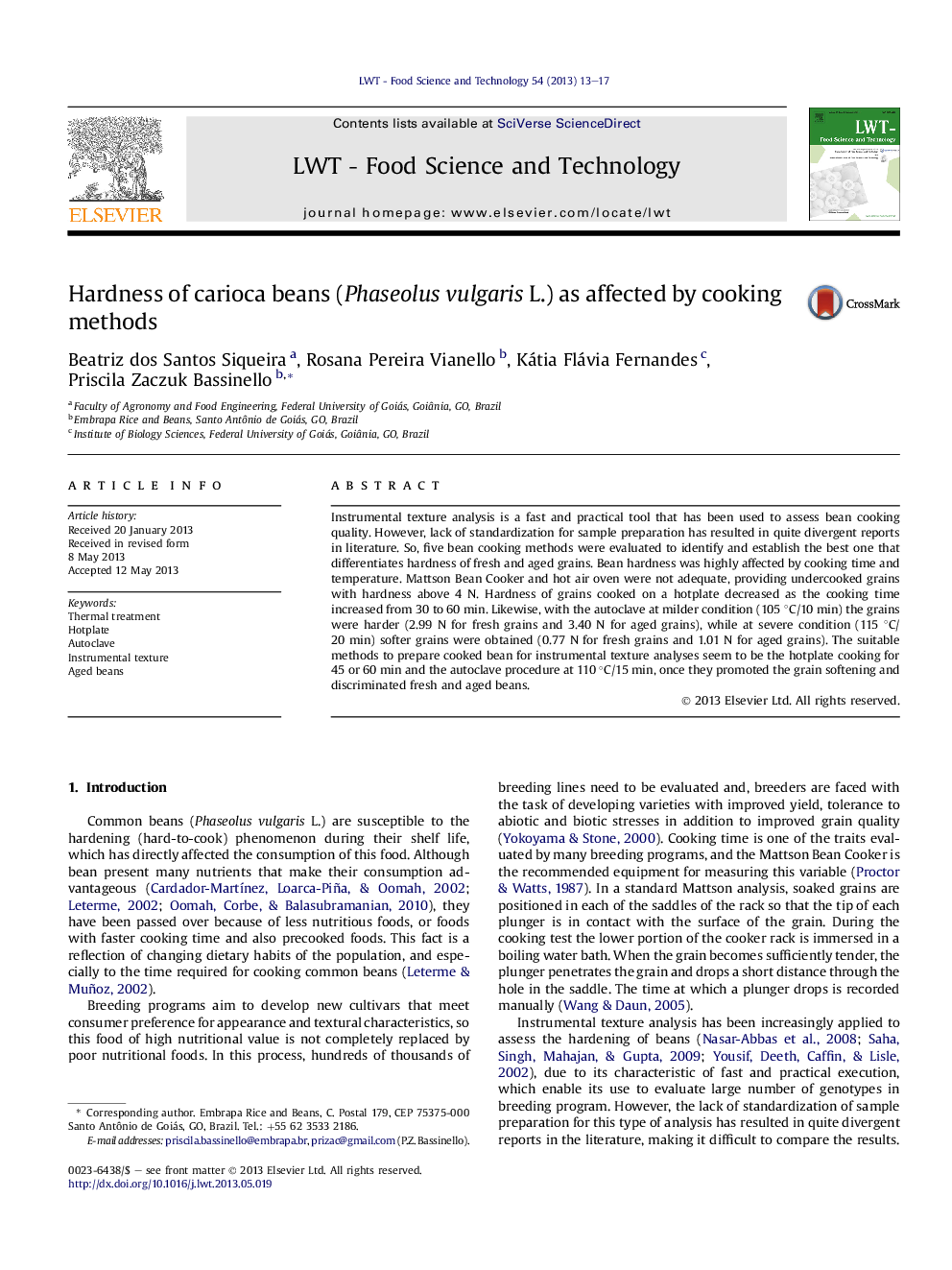| Article ID | Journal | Published Year | Pages | File Type |
|---|---|---|---|---|
| 6404153 | LWT - Food Science and Technology | 2013 | 5 Pages |
â¢We demonstrate that cooking procedure is critical for bean cooking quality.â¢Hardness is highly affected by cooking time, system pressure and heat transference.â¢Hotplate cooking (45 or 60 min) and autoclave (110 °C/15 min) are suitable methods.â¢These cooking methods demonstrated to be able to discriminate fresh and aged grain.
Instrumental texture analysis is a fast and practical tool that has been used to assess bean cooking quality. However, lack of standardization for sample preparation has resulted in quite divergent reports in literature. So, five bean cooking methods were evaluated to identify and establish the best one that differentiates hardness of fresh and aged grains. Bean hardness was highly affected by cooking time and temperature. Mattson Bean Cooker and hot air oven were not adequate, providing undercooked grains with hardness above 4 N. Hardness of grains cooked on a hotplate decreased as the cooking time increased from 30 to 60 min. Likewise, with the autoclave at milder condition (105 °C/10 min) the grains were harder (2.99 N for fresh grains and 3.40 N for aged grains), while at severe condition (115 °C/20 min) softer grains were obtained (0.77 N for fresh grains and 1.01 N for aged grains). The suitable methods to prepare cooked bean for instrumental texture analyses seem to be the hotplate cooking for 45 or 60 min and the autoclave procedure at 110 °C/15 min, once they promoted the grain softening and discriminated fresh and aged beans.
